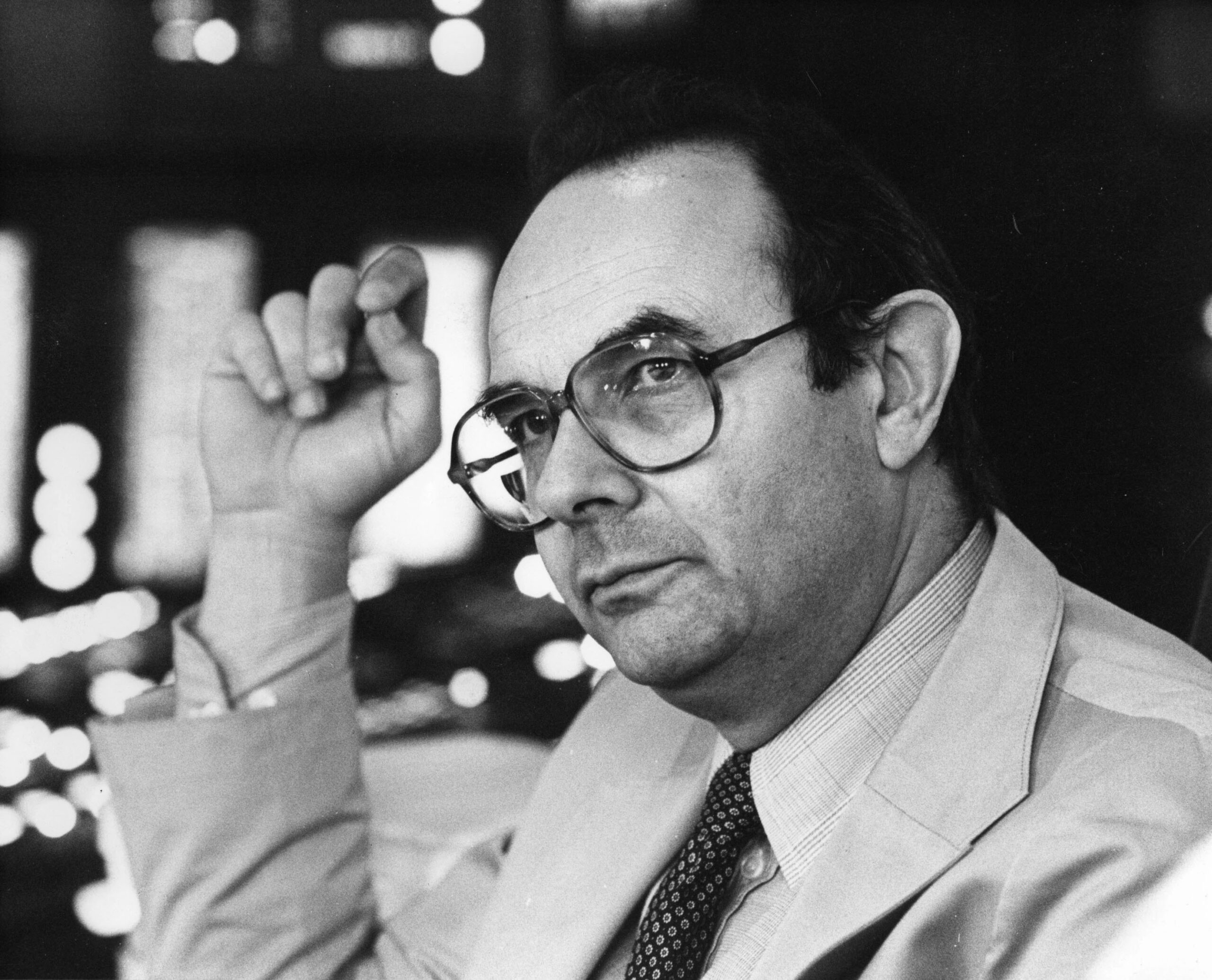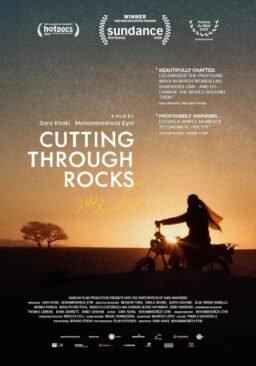Stanley Donen, the prolific director behind “Singin’ in the Rain” and “Damn Yankees,” among many other iconic movie musicals and comedies, died Thursday of a heart attack, his son reported early today. He was 94. First as a choreographer and then a director, Donen imaginatively liberated the musical from its stagebound roots, taking it outside to city streets (“On the Town,” 1950), urban parks (“The Pajama Game,” 1957), and even the Eiffel Tower (“Funny Face,” 1957). Martin Scorsese perfectly summed up Donen’s career while presenting the filmmaker with a lifetime achievement Oscar at the 1997 Academy Awards: “During the golden age of movies, he set the gold standard.”
If Donen (pronounced DONN-en) transformed the movie musicals, it may have been because musicals had long ago transformed him. Born in Columbia, South Carolina in 1924, Donen discovered movies as a way of escaping the taunts of anti-Semitic classmates. At the age of nine, he watched Fred Astaire and Ginger Rogers in “Flying Down to Rio” and would recall later, “It was as if something exploded inside me.” “When Astaire danced, everything in this world was perfect.” Donen would later go on to direct his idol in “Royal Wedding” (1951) and “Funny Face” (1957).
Throughout his childhood, Donen took tap lessons and experimented with the family’s home-movie camera. By the time he completed high school at 16, he was prepared to take on duties both behind and in front of the lens. Because Broadway was closer to South Carolina than Hollywood, he launched his movie career by way of New York City.

Within weeks of arriving there, the self-described “green hick” landed a part in the chorus of Rodgers’ and Hart’s Pal Joey. The title role belonged to a Pittsburgh hoofer named Gene Kelly, who would become, in the words of Donen biographer Stephen Silverman, the filmmaker’s “mentor and tormentor.” The producer/director was Broadway legend George Abbott, who also hired both Kelly and Donen for his next Broadway musical, “Best Foot Forward,” giving them extra creative responsibilities. Kelly starred in and choreographed the military-school musical comedy, while Donen assisted.
In 1942, at the ripe old age of 18, Donen followed Kelly to Hollywood where both found work at MGM: Kelly, in a leading role opposite Judy Garland in “For Me and My Gal,” and Donen in another choreographic assistantship and a dancing role in the movie version of “Best Foot Forward.” Donen assisted Kelly with choreography for “Cover Girl” (1944) and then “Anchors Aweigh” (1945), for which Donen spent nearly a year blocking, shooting and editing a sequence with Kelly and an animated Jerry the Mouse.
MGM executives took notice. In 1949, they hired Kelly and Donen to co-direct “On the Town” (1950), the boisterous musical about three sailors on shore leave in New York. The studio permitted the filmmakers to shoot a week on location. The open air invigorated the songs and dances, inching the Hollywood musical toward realism.
It wasn’t Donen’s idea to have Astaire dance on the ceiling in “Royal Wedding” (1951). Yet in the director’s first solo stint behind the camera, he made lyricist Alan Jay Lerner’s dream a reality. Inside a 20-foot steel cylinder, carpenters constructed Astaire’s hotel room, nailing all the furniture down. Donen’s camera was fixed to the bottom of the cylinder, which revolved and enabled his idol to appear to glide up a wall, across the ceiling and down another wall for the film’s most magical sequence.

At 28, Donen was assigned to co-direct “Singin’ in the Rain” (1952) with Kelly. Though the musical comedy about Hollywood’s bumpy transition from silent to sound films was well-liked at the time of its release (Charlie Chaplin and Francois Truffaut were fans), it was 30 years after its release that Cahiers du Cinema ranked it the second greatest film of all time. When AFI ranked the greatest movie musicals, it was number one. By Donen’s death it had been elevated to Hollywood pantheon.
“What’s so unusual about it,” Donen told his biographer Stephen Silverman, “ … is that more of its screen time is taken up by singing and dancing numbers than by the dialogue.” That may be the reason that 60 years later, it remains a work of buoyant and impudent fun.
Over his next decade, he directed five more classic musicals and virtually created a new movie genre, the sophisticated adult comedy. The musicals included the romping, stomping “Seven Brides for Seven Brothers” (1954), the under-appreciated “It’s Always Fair Weather” (1955) about three war buddies who grow apart (his last collaboration with Kelly) and the sublime “Funny Face” (1957) with Fred Astaire as the Pygmalion who transforms dowdy intellectual Audrey Hepburn into a glamorous fashion model.
With George Abbott producing, Donen brought two well-received Broadway adaptations to the screen: “The Pajama Game” (1957), a lovely John Raitt-Doris Day film about a wage dispute in a pajama factory, and “Damn Yankees” (1958), starring Tab Hunter as the modern Faust who sells his soul to the devil in order to become a baseball hero.
In “Indiscreet” (1958), which Donen produced with star Cary Grant, the director introduced the comedy of adultery. In this one, Grant pretends to be married so he doesn’t have to get serious with amour Ingrid Bergman. In “The Grass is Greener” (1961), married couple Grant and Deborah Kerr are attracted to singletons Jean Simmons and Robert Mitchum, respectively. “Charade” (1963), Donen’s next, with Grant and Audrey Hepburn, was the most fully realized: The stylish thriller about a suddenly widowed woman and a mystery man earned the biggest box office of Donen’s career. His follow-up “Arabesque” (1966), with Gregory Peck and Sophia Loren, was a chase-romance in a similar vein.
He embraced new narrative styles as the Hollywood director most influenced by the French New Wave. The director’s third film with Hepburn, “Two for the Road” (1967), was the best of his career. This bittersweet mosaic of marriage jump-cuts back and forth among four time periods. Hepburn and co-star Albert Finney play the marrieds: She’s content, while he’s chafing at the bit. The movie wasn’t a financial success, but its non-chronological narrative, surprising editing and vulnerable performances still make it a standout in his incredible filmography.
Donen knew something of marriage himself. He was married five times, to dancer Jeanne Coyne, actress Marion Marshall, onetime restaurant hostess Lady Adelle Beatty, actress Yvette Mimieux and boutique saleswoman Pam Braden. Embroidered on a pillow in Donen’s living room was the affirmation, “Eat, drink, and remarry.”
The women he didn’t wed were equally significant. Early in his career, he dated Elizabeth Taylor, widely acknowledged to be one of the most beautiful woman in the movies. From 1999 until his death he cohabitated with writer/director Elaine May, widely acknowledged to be one of the smartest and funniest woman in movies.
He claimed that he asked May to marry him “about 172 times.” Instead of putting his ring on her finger, she gave him an upscale dog tag he wore around his neck. It was inscribed: “Stanley Donen. If found, please return to Elaine May.”
Donen made films in genres rarely nominated for Oscars. Nevertheless, in 1997 Martin Scorsese presented him with an honorary statuette and the musicals director stopped the show by dancing with his statuette while crooning, “Cheek to Cheek.”
Mr. Donen is survived by Ms. May, two of his three sons, and 27 films, more than a handful of them immortal.











